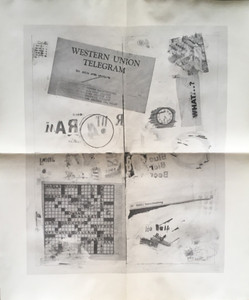
Shusaku Arakawa Historic Dwan Gallery Poster: Presence or the Third Person, 1967
Shusaku ArakawaCONTACT GALLERY FOR PRICE
Shusaku Arakawa
Historic Dwan Gallery Poster: Presence or the Third Person, 1967
Rarely found, coveted 1967 poster from the legendary Dwan Gallery.
In 2016, the National Gallery of Art held a monumental exhibition celebrating the life and career of Virginia Dwan, curated by art historian James Meyer. The exhibition was accompanied by a lavish 410 page illustrated hardback monograph. Below is a link to more information on this exhibition:
https://www.nga.gov/exhibitions/2016/from-los-angeles-to-new-york-dwan-gallery.html
This poster is documented on page 308 of the monograph
Shūsaku Arakawa (荒川 修作, Arakawa Shūsaku, July 6, 1936 – May 19, 2010) was a Japanese conceptual artist and architect. He had a personal and artistic partnership with the writer and artist Madeline Gins that spanned more than four decades in which they collaborated on a diverse range of visual mediums, including: painting & printmaking, experimental filmmaking, performance art, and architectural & landscape design.
Throughout his life, Arakawa frequently infused his works with philosophical ideas that considered art's intrinsic functions, human perceptions of the physical world, and the language of signs, symbols, and visual meanings. These thematic elements were based on the writings and theories authored by key figures in Science, Philosophy, and Art History: Leonardo da Vinci, Albert Einstein, and Ludwig Wittgenstein.
Beginning in the 1960s, Arakawa's work attracted positive responses from the Western art world and led to his representation at numerous esteemed galleries and museums: the Dwan Gallery, Gagosian, The National Museum of Modern Art, Centre Pompidou, David Barnett Gallery, The Metropolitan Museum of Art, and the Museum of Modern Art, New York.
Arakawa and Gins founded The Reversible Destiny Foundation in which they designed architectural sites that were aimed toward the longevity of human life expectancy. Moreover, they established the Architectural Body Research Foundation in 1987 as a non-profit research group that stimulated multidisciplinary studies with renowned biologists, neuroscientists, quantum physicists, and medical doctors on the nature of life and death.
-Wiki









